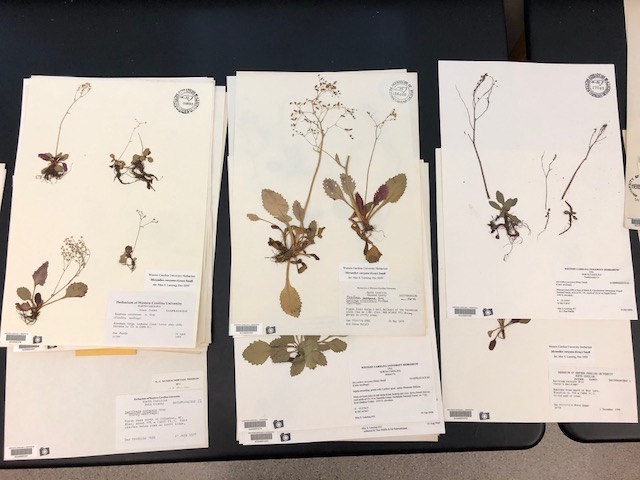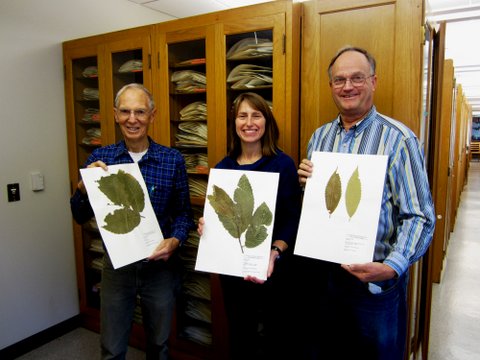Herbarium (WCUH)

The WCU Herbarium is a plant biodiversity resource and repository for preserved plant specimens collected primarily in the southern Appalachians and southeastern U.S. WCUH is the largest botanical resource in western North Carolina, with over 29,000 pressed and dried vascular plant specimens. In addition to vascular plants, we also have approximately 4,000 specimens of nonvascular plants and fungi (including lichens, mosses and fern gametophytes) and plants from outside the southeastern region and outside the U.S.
WCUH serves as a significant teaching and research facility that provides documentation
of past and present plant diversity in the southern Appalachians.
The Herbarium was established in 1953 by Professor Clinton Dodson who, with botany
students, built the initial core of the collections. Dr. James Horton assumed the
Directorship in 1962 and, over the next decade, significantly increased the number
of plant specimens representing state and local flora. Exchange with UNC-Chapel Hill
(NCU) during the 1970s and 80s also boosted the holdings of the collection. Dr. Dan
Pittillo became the next Herbarium Director and contributed his personal collections
from 1970 onward. After Dr. Pittillo’s retirement in 2005, Dr. Katherine Mathews became
Director of WCUH.
Significant Collections
WCUH is the main repository for Blue Ridge Parkway collections of North Carolina and also maintains collections from Great Smoky Mountains National Park. National and State Park specimens are maintained in separate genus folders from the main collections.
Flora of Southern Highland Rock Outcrops:
Representing over 1,400 collections made by Dan Pittillo and James Horton between 1966-1974, these collections document the flora of the unique, high-elevation (2,000-5,700 ft) rock outcrop habitat in the southern Appalachians. The specimens are maintained in separate folders from the main collections.
Facilities

The WCU Herbarium is housed in the Stillwell Science Building. The pressed and dried plant specimens are stored in 35 full-size oak cabinets built in the early 1950s by the Southern Desk Company. Researchers wanting to use the facility and anyone wanting to visit the herbarium may do so by appointment. Contact Dr. Kathy Mathews (Director) at kmathews@wcu.edu or (828) 227-3659.
The main collections room contains the cabinets along with research benches and dissecting microscopes. The adjacent curator’s office provides additional workspace and a small botanical reference library. Adjacent rooms serve as plant drying, mounting, sorting, packaging and freezing areas.
Activities
WCUH maintains an active loan program and is open to exchange of duplicate specimens with other herbaria. Digital loans may also be made to qualified researchers upon request. The collections are used for plant identification by professional botanists in the area, as well as for research in plant systematics by scientists around the country. WCU graduate students focusing on plant systematics use the collections for research and contribute their own collections to the Herbarium.
We offer assistance in plant species identification to members of the public. Those interested may email a digital photo of the plant in question for identification. The photo must be in focus, high-resolution, and include the entire plant or multiple photos of as many aspects of the plant as available (main stem, leaves, twigs, flowers, fruit). Provide information on the exact locality and date where the plant was found (a habitat photo may also be useful).
We provide educational, small-group tours of the collection as well as pressed-plant specimen preparation and plant identification workshops to non-profit groups interested in botany. Please contact Dr. Mathews for more information.